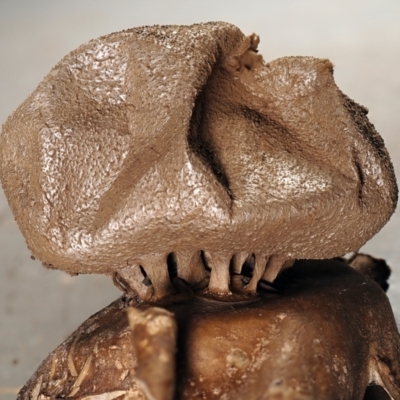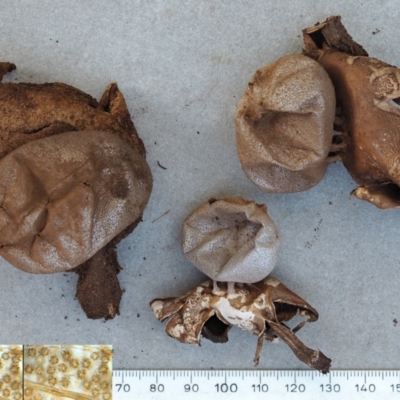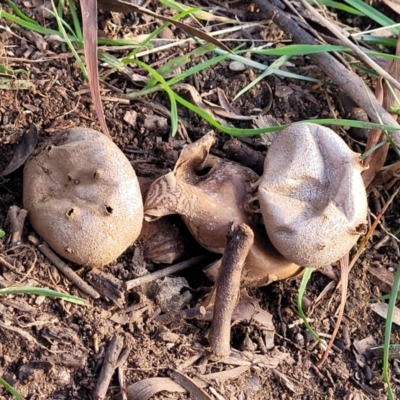Myriostoma australianum
The fruitbody consists of a spore sac atop a star-like base. The spore sac is grey brown, somewhat shiny (at times almost with a metallic sheen) and with a roughened surface. There are several holes in the upper surface through which the powdery spores are released. The spore sac is held up by a number of stems (each up to 6 millimetres long and 1 to 2 wide). The spore sac may be up to 5 centimetres wide and the star-like base up to about 10 centimetres across.
The fruitbodies have been found on soil in a variety of habitats in eastern Australia.
The first published description of this species appeared in 2019, in the paper listed below. Before then the name Myriostoma coliforme used for Myriostomas in various parts of the world. However, it is now known that there are several species in the genus, with Myriostoma coliforme restricted to the northern hemisphere. Myriostoma australianum is the only one known from Australia.
Look-alikes
This is unmistakeable. A Geastrum fruitbody also consists of a spore sac atop a star-like base. However, in that genus there is just one apical hole through which spores are released. Certainly spore sacs are sometimes damaged so you may see more than one hole, however, in Geastrum the spore sac is either stemless or is supported by just one stem.
Reference
Sousa, J.O; Baseia, I.G. & Martín, M.P., 2019), Strengthening Myriostoma (Geastraceae, Basidiomycota) diversity: Myriostoma australianum sp. nov, Mycoscience, 60, 25-30.
Gallery
Regional distribution
Myriostoma australianum is listed in the following regions:









